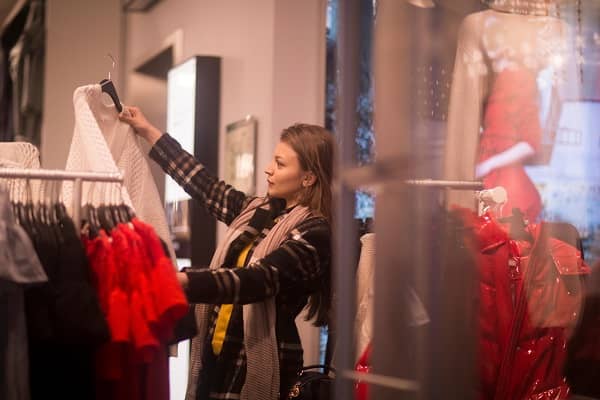Have you ever walked into a supermarket and felt lost, overwhelmed, or frustrated? A cluttered, confusing layout can drive customers away just as quickly as bad service.
A well-designed store layout isn’t just about aesthetics—it’s a powerful tool that guides customers, enhances their shopping experience, maximises product visibility, and enhances overall sales. Yet, store layout remains one of the most overlooked yet crucial aspects of running a food business.
Whether you operate a bakery, a deli, or a supermarket, fine-tuning your layout can help you convert casual browsers into loyal customers. If you’ve ever wondered how to optimise your store layout for better customer flow and higher sales, this guide is for you.
Leverage hot food displays for foot traffic and impulse buys
One of the best-kept secrets in the food retail industry is the strategic placement of hot food displays. These displays not only serve as a focal point for hungry customers but also create an inviting aroma that draws people in.
Think about the last time you walked past a rotisserie chicken stand or a bakery section filled with fresh pies and sausage rolls. The warm, tempting smell alone likely made you consider a purchase, even if you weren’t initially planning to buy hot food. This is precisely why hot food displays should be placed in these high-traffic areas:
- Near the entrance: Placing a hot food display at the store entrance creates an immediate sensory experience, enticing customers as soon as they step inside.
- Along main walkways: Positioning hot food in these high-traffic zones ensures maximum exposure to shoppers navigating the store.
- Close to complementary products: Place hot food displays near refrigerated drink sections encourages add-on purchases.
- At checkout: A strategically placed hot food display near the point of sale can lead to last-minute, impulse-driven purchases.
Optimise the ‘Decompression Zone’
The first few metres of your store, known as the ‘decompression zone,’ are critical in setting the right tone for customers. This space should feel open and inviting, allowing customers to acclimatise before making purchasing decisions. If this area is cluttered with heavy signage, excessive promotional materials, or overcrowded shelving, customers may feel overwhelmed and disengaged.
Instead, use the decompression zone to introduce warm lighting, clear signage, and visually appealing displays. An open layout with a welcoming scent (such as that from a hot food display) creates a positive first impression and encourages customers to explore further.
Improve natural flow and sightlines
Customers generally navigate stores in a predictable pattern. In Australia, shoppers often instinctively turn left upon entering. This is why placing high-margin or must-see products along the left-side path can be an effective strategy.
Additionally, ensuring clear sightlines across the store encourages customers to move naturally. Avoid obstructing views with tall shelving at the entrance—this creates a visual barrier that makes the store feel smaller and less inviting. Instead, use lower displays near the front and gradually increase shelving height as customers move deeper into the store.
Implement a ‘Speed Bump’ strategy
A speed bump strategy refers to the intentional use of product displays to slow customers down and encourage them to notice key items. This can be achieved through:
- Endcap displays: Position special promotions or bestsellers at the end of aisles to grab attention.
- Thematic stations: Feature seasonal items, meal kits, or pairing suggestions (e.g., cheese with artisan crackers) in high-traffic zones.
- Sampling stations: Offering free samples near hot food displays can entice customers to make unplanned purchases while improving their overall shopping experience.
Design aisles to be wide, not cramped
Narrow aisles create congestion, making customers feel uncomfortable, which could lead to missed sales opportunities. Ideally, your store layout should include:
- Wider main aisles: These should be spacious enough to accommodate multiple customers and shopping trolleys.
- Strategic secondary aisles: While these can be narrower, they should never feel cramped or difficult to navigate.
- Clear signage: Use clear, well-lit signage to help customers locate products efficiently without frustration.
Maximise impulse purchases near checkout
Checkout areas are prime real estate for boosting sales. Customers waiting in line are more likely to make impulse purchases when engaging, low-cost items are within reach.
For food businesses, this means stocking checkout counters with:
- Hot snacks like meat pies, sausage rolls, or fresh bread rolls.
- Small but high-margin items such as premium chocolate bars or gourmet sauces.
- Cold beverages for easy grab-and-go convenience.
The key is to ensure these displays look appealing without feeling cluttered or overwhelming.
Enhance store ambience with lighting and colours
The right lighting and colour scheme can dramatically influence how customers perceive your store. Warm lighting creates a welcoming atmosphere, while bright, focused lighting on key displays (like hot food stations) draws attention to specific products.
Likewise, colour psychology plays a role in purchasing behaviour. Red and yellow hues often stimulate appetite, which is why many food businesses use these colours in branding and signage. Blue and green tones can create a sense of freshness and health, making them ideal for produce sections.
Adapt your layout to changing consumer habits
Consumer habits change, and so should your store layout. Regularly assess how customers interact with your space and be willing to adapt. If you notice a particular aisle isn’t performing well or that customers tend to bypass a specific section, experiment with repositioning displays or adjusting shelving.
Seasonal trends should also dictate layout changes. For example, during summer months, placing chilled food-to-go near the entrance can cater to customers looking for quick, refreshing options. In winter, an expanded hot food section near the checkout can drive comfort food sales.
Start optimising your store layout today
An optimised store layout is more than just an aesthetic consideration—it directly impacts customer experience, dwell time, and ultimately, your bottom line. By strategically placing hot food displays, designing clear pathways, leveraging sensory elements, and adapting based on customer behaviour, you can create a store that not only looks good but also drives sales.
Whether you run a convenience store, a specialty grocery, a supermarket, or a venue with customers, investing time into store layout planning can lead to significant long-term gains. Take a walk through your store with fresh eyes, identify areas for improvement, and start making subtle yet impactful changes today.






Leave a Comment